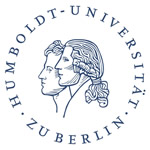Institut für Physik - Humboldt-Universität zu Berlin and Max-Born-Institut
Publications >>
Photoluminescence from ultrathin Ge-rich multiple quantum wells observed up to room temperature: Experiments and modeling
Photoluminescence from ultrathin Ge-rich multiple quantum wells observed up to room temperature: Experiments and modeling
T. Wendav, I.A. Fischer, M. Virgilio, G. Capellini, F. Oliveira, M.F. Cerqueira, A. Benedetti, S. Chiussi, P. Zaumseil, B. Schwartz, K. Busch, and J. Schulze (2016)
Physical Review B 94:245304
Summary (expand/hide)
Employing a low-temperature growth mode, we fabricated ultrathin Si1−x Gex /Si multiple quantum well structures with a well thickness of less than 1.5 nm and a Ge concentration above 60% directly on a Si substrate. We identified an unusual temperature-dependent blueshift of the photoluminescence (PL) and exceptionally low
thermal quenching. We find that this behavior is related to the relative intensities of the no-phonon (NP) peak and a phonon-assisted replica that are the main contributors to the total PL signal. To investigate these aspects in more detail, we developed a strategy to calculate the PL spectrum employing a self-consistent multivalley effective mass model, in combination with second-order perturbation theory. Through our investigation, we find that while the phonon-assisted feature decreases with temperature, the NP feature shows a strong increase in the recombination rate. Besides leading to the observed robustness against thermal quenching, this causes the observed blueshift of the total PL signal.
Default Region Image



